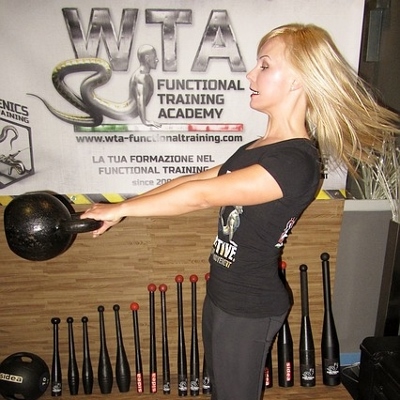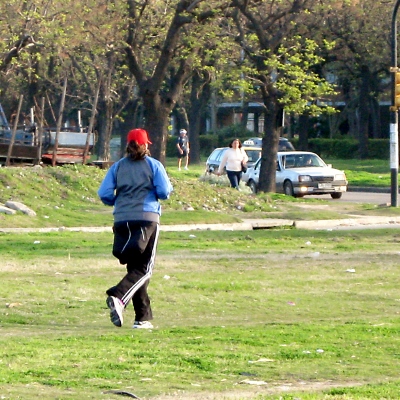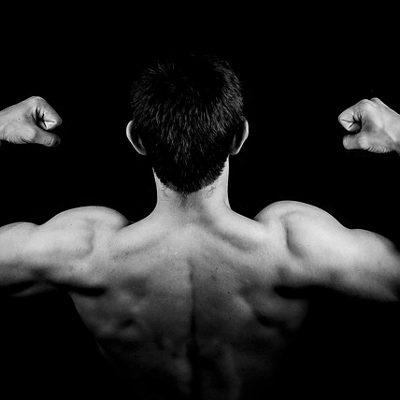 According to Wikipedia, “fascia is soft connective tissue that provides support and protection for most structures within the human body, including muscle. This soft tissue can become restricted due to disease, overuse, trauma, infections, or inactivity. This restriction often results in pain, muscle tension, and diminished blood flow.â€
According to Wikipedia, “fascia is soft connective tissue that provides support and protection for most structures within the human body, including muscle. This soft tissue can become restricted due to disease, overuse, trauma, infections, or inactivity. This restriction often results in pain, muscle tension, and diminished blood flow.â€
We spend a lot of time in yoga focusing on stretching our muscles, but what about fascia? Without some TLC, fascia can be a major obstacle in our efforts to become more mobile and flexible. When fascia is irritated, it becomes inflamed, and thickened, and this thickening causes more pain and irritation, resulting in muscle tension that causes even more inflammation. The cycle continues to wreak havoc on the body.
To get a better picture of what fascia looks like inside your body, consider an orange. The outer rind represents your skin. Just under the thick skin, you find a white layer surrounding the whole fruit. Your body has a layer of fascia like that just under the skin, which surrounds your whole body. This fascia serves as a container, a boundary for the liquid in your body; without it, we would leak out all over the place. Back to the orange. Each slice is compartmentalized by white fibers. In your body, the fascia wraps each group of muscles, and each muscle individually. This allows our muscles to slide across each other without friction. Returning to the orange again, each tiny sack of juice is surrounded by more fascia to keep the liquid from draining out. Fascia does the same thing in our bodies. Every cell is compartmentalized by fascia.
We can think of the body as being connected by a vast network of fascia. Tugging gently in the middle of the back we may be able to feel how the front of the body is affected. A traumatic injury to the ankle may create tension around a hip or even shoulder. Fascia travels everywhere, and it is responsible for connecting all of the parts of our body.
Throughout our lifetime most of us begin to shrink with age and become less mobile. This does not have to happen. It’s not the accumulation of days that changes our bodies – it’s what we do with those days. The health of our fascia determines the state of our body as we age. Immobility is death for fascia. Lack of movement and the increased pressure exacerbated by stress, as chronic stress tends to shorten our muscles. Repetitive movements, and movement that is contractive (think weight lifting) and tends to tighten the body, also affect the body adversely and will lead to the demise of the fascia in the long term.
Yoga asanas (postures) become our tool to re-create our bodies every day as we warm up, stretch, and reshape our fascia. In yoga the focus is on lengthening and expanding the body, not only our muscles, but also our entire network of fascia. Over time, with a continued practice, a person will actually grow taller and even such ailments as scoliosis can be improved. We do not have to end up shortened and compacted as we age.
Let’s look at a little exercise that shows how fascia limits or enhances our overall flexibility.
First, measure your hamstring flexibility.
 Come into a standing forward bend with your feet hip distance apart. Press down into your feet, lift your kneecaps upward to contract your front thighs and try to straighten your legs. 
Unless you can easily bring your palms to the floor with your legs straight, use yoga blocks (or books or a handy chair), to support your upper body.
Make a note of how much height you need in order to place your palms flat, then come up from your forward bend.
Now, stand close to a wall or a chair for balance. Place a tennis ball under one foot and start to roll the sole of your foot over the tennis ball.
 Put enough weight into the ball to have an intense, yet pleasant sensation.
Drape your toes over the tennis ball and massage under your toes. Then work your way down the sole of your foot, all the way back to your heel. Roll along the inner and outer arches.
 Keep rolling for at least one minute, and then move to your other foot.
Once you’ve worked both feet, revisit your forward bend. You may be surprised to find that – wa laa! – your hamstrings have lengthened by as much as an inch or two.
This test might open your eyes to the role fascia plays in flexibility. Loosening the fascia on the bottom of your feet affects your hamstring flexibility. You can use a tennis ball or a foam roller just about anywhere on your body before performing a stretch and notice how much more responsive your body is after loosening the fascia.
To see a video of this exercise, visit my website.






Great post! The fascia is actually a single tissue that covers the body from head to toe and connects its every part inextricably with one another. It acts like an individual wrapping for every internal part, keeping it separate from the rest. Largely ignored till recent times, mainly because of its undefined function and messy appearance, modern research has revealed the extent of the impact of fascia on muscle strength, bio mechanics and athletic performance. For more on how to maintain the fine balance between elasticity and tension in the muscle fascia to enable the best physical equilibrium please visit http://lovefitnesseducation.com/2012/08/21/understanding-muscle-fascia/